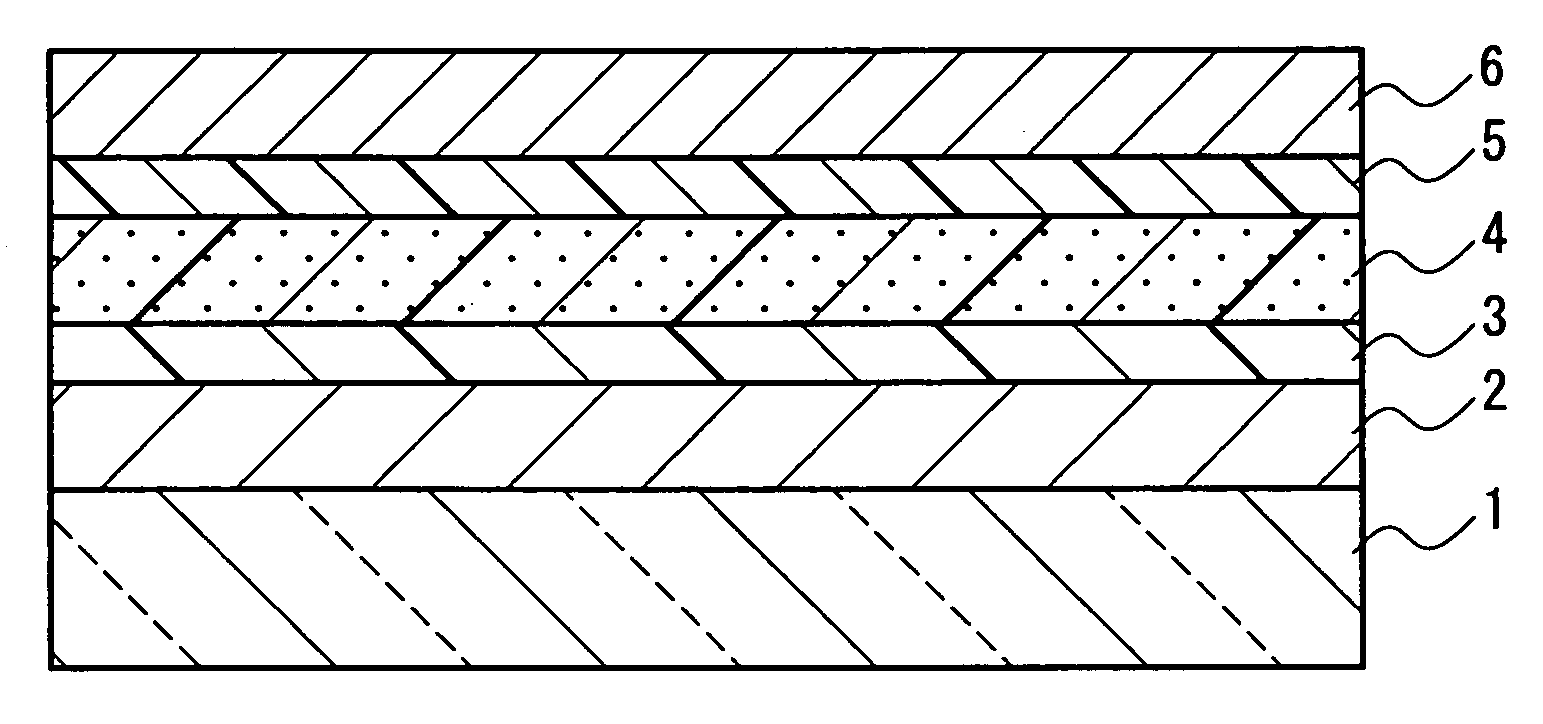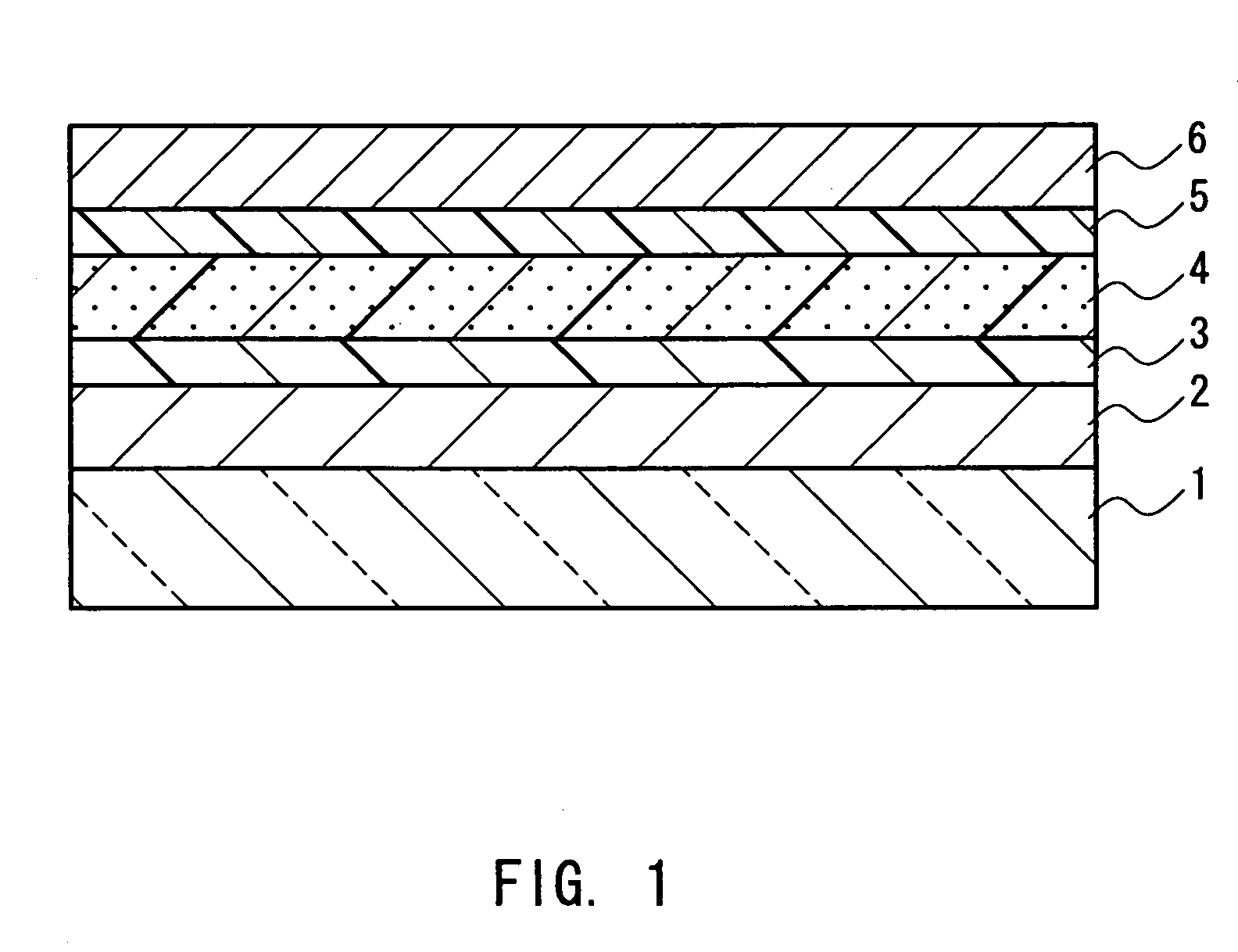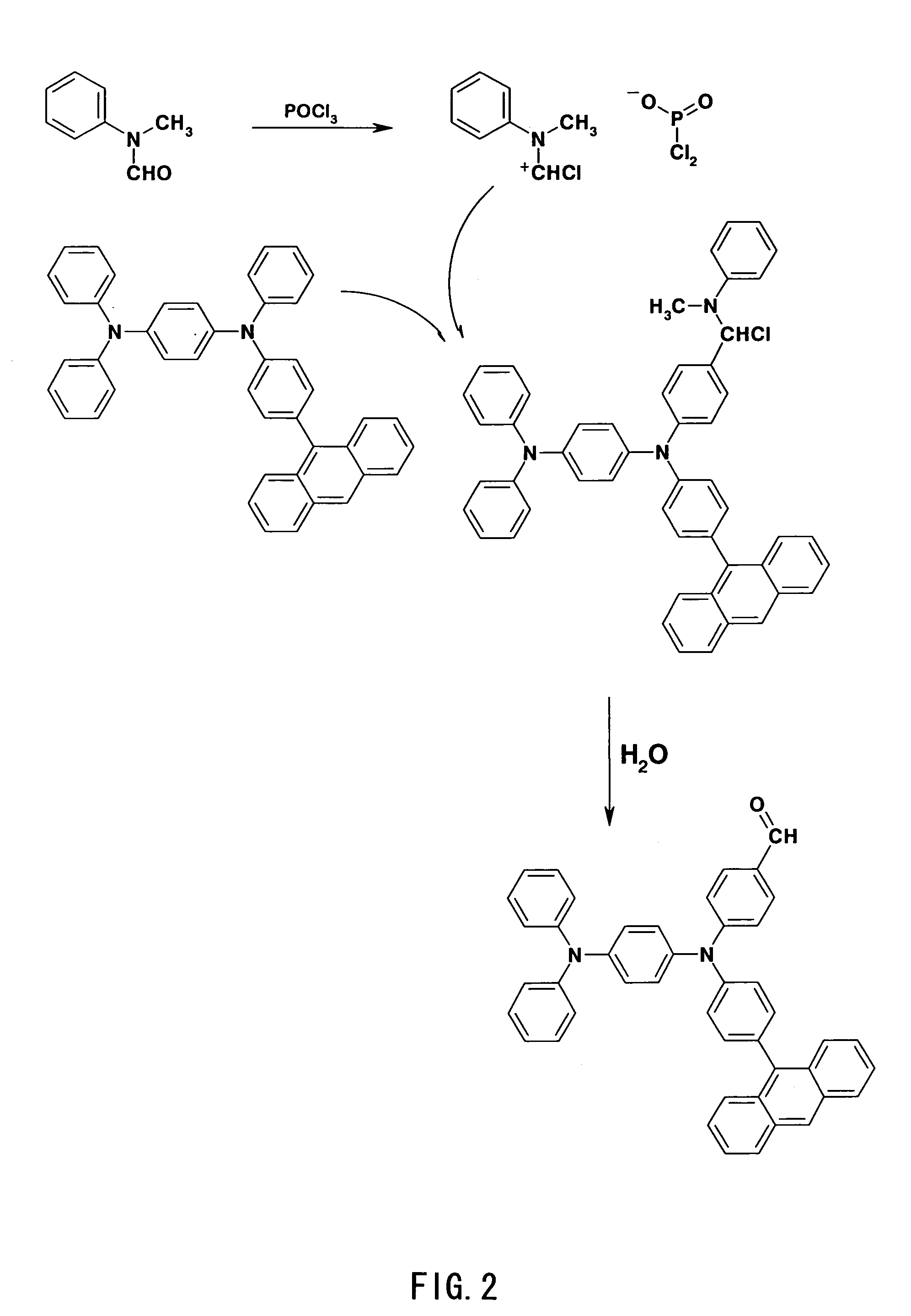Luminous element and method for preparation thereof
a technology of electroluminescent elements and luminous elements, applied in the direction of discharge tube luminescnet screens, other domestic articles, natural mineral layered products, etc., can solve the problems of narrow viewing angle, insufficient properties, and low response speed
- Summary
- Abstract
- Description
- Claims
- Application Information
AI Technical Summary
Problems solved by technology
Method used
Image
Examples
example 1
[0110]FIG. 1 is a schematic cross-sectional view illustrating an organic thin film electroluminescent element as a light-emitting element of the present invention. In FIG. 1, 1 denotes a transparent substrate. 2 denotes a hole-injection electrode. 3 denotes a hole-transport layer. 4 denotes a hole-transport light-emitting layer that corresponds to a light-emitting region in the present invention, that contains a compound capable of sustaining the charge transport and a heavy metal so that the heavy metal is co-present as a mixed material. 5 denotes an electron-transport layer. 6 denotes a cathode. Light-emitting elements of the other examples are substantially similar to this embodiment, but the present invention is not limited to the embodiment shown in the drawing.
[0111]The following describes the light-emitting element of the foregoing embodiment in more detail. A commercially-available ITO-applied glass substrate (produced by Sanyo Vacuum Industries Co., Ltd., size: 100 mm×100 m...
example 2
[0134]A thin film EL element sample was produced in the same manner as that of Example 1 except that in forming the hole-transport light-emitting layer of Example 1,[0135][4-(2,2-diphenylvinyl)phenyl](4-methoxyphenyl){4-[(4-methoxyphenyl)phenylamino]phenyl}amine (abbreviated as “M2PPDA-PS”) was used in place of [4-(2,2-diphenylvinyl)phenyl][4-(diphenylamino)phenyl]phenylamine (PPDA-PS).
[0136]Here,[0137][4-(2,2-diphenylvinyl)phenyl](4-methoxyphenyl){4-[(4-methoxyphenyl)phenylamino]phenyl}amine (M2PPDA-PS) was obtained by synthesis as follows.
[0138]27.6 g of N,N′-diphenyl-p-phenylenediamine, 50 g of p-iodoanisole, 75 ml of nitrobenzene, 30 g of K2CO3, 7.2 g of copper powder, and I2 (trace) were put in a four-neck flask of 300-milliliter volume, and were refluxed gently over 24 hours by stirring the same while removing generated water by distillation. Subsequently, steam distillation was carried out, and when a distillate no longer came out, residues were extracted using toluene after ...
example 3
[0147]A thin film EL element sample was produced in the same manner as that of Example 1 except that in forming the hole-transport light-emitting layer of Example 1,[0148](4-{[4-(2,2-diphenylvinyl)phenyl](4-(9-anthryl)phenyl)amino}phenyl)diphenylamine (abbreviated as “PPDA-PS-A”) was used in place of[0149][4-(2,2-diphenylvinyl)phenyl][4-(diphenylamino)phenyl]phenylamine (PPDA-PS), and it was co-deposited together with Ir in the same manner as that of Example 1. The same evaluating operations were carried out as those in Example 1 described above. The evaluation results are shown in Table 1.
[0150]Here,[0151](4-{[4-(2,2-diphenylvinyl)phenyl](4-(9-anthryl)phenyl)amino}phenyl)diphenylamine (PPDA-PS-A) was obtained by synthesis as follows.
[0152]After carrying out an Ullmann reaction of N-acetyl-1,4-phenylenediamine as a starting material with iodobenzene, a reaction product was subjected to hydrolysis, and further subjected to an Ullmann reaction with 9-(4-iodophenyl)anthracene, so that ...
PUM
| Property | Measurement | Unit |
|---|---|---|
| atomic number | aaaaa | aaaaa |
| thickness | aaaaa | aaaaa |
| thickness | aaaaa | aaaaa |
Abstract
Description
Claims
Application Information
 Login to View More
Login to View More - R&D
- Intellectual Property
- Life Sciences
- Materials
- Tech Scout
- Unparalleled Data Quality
- Higher Quality Content
- 60% Fewer Hallucinations
Browse by: Latest US Patents, China's latest patents, Technical Efficacy Thesaurus, Application Domain, Technology Topic, Popular Technical Reports.
© 2025 PatSnap. All rights reserved.Legal|Privacy policy|Modern Slavery Act Transparency Statement|Sitemap|About US| Contact US: help@patsnap.com



